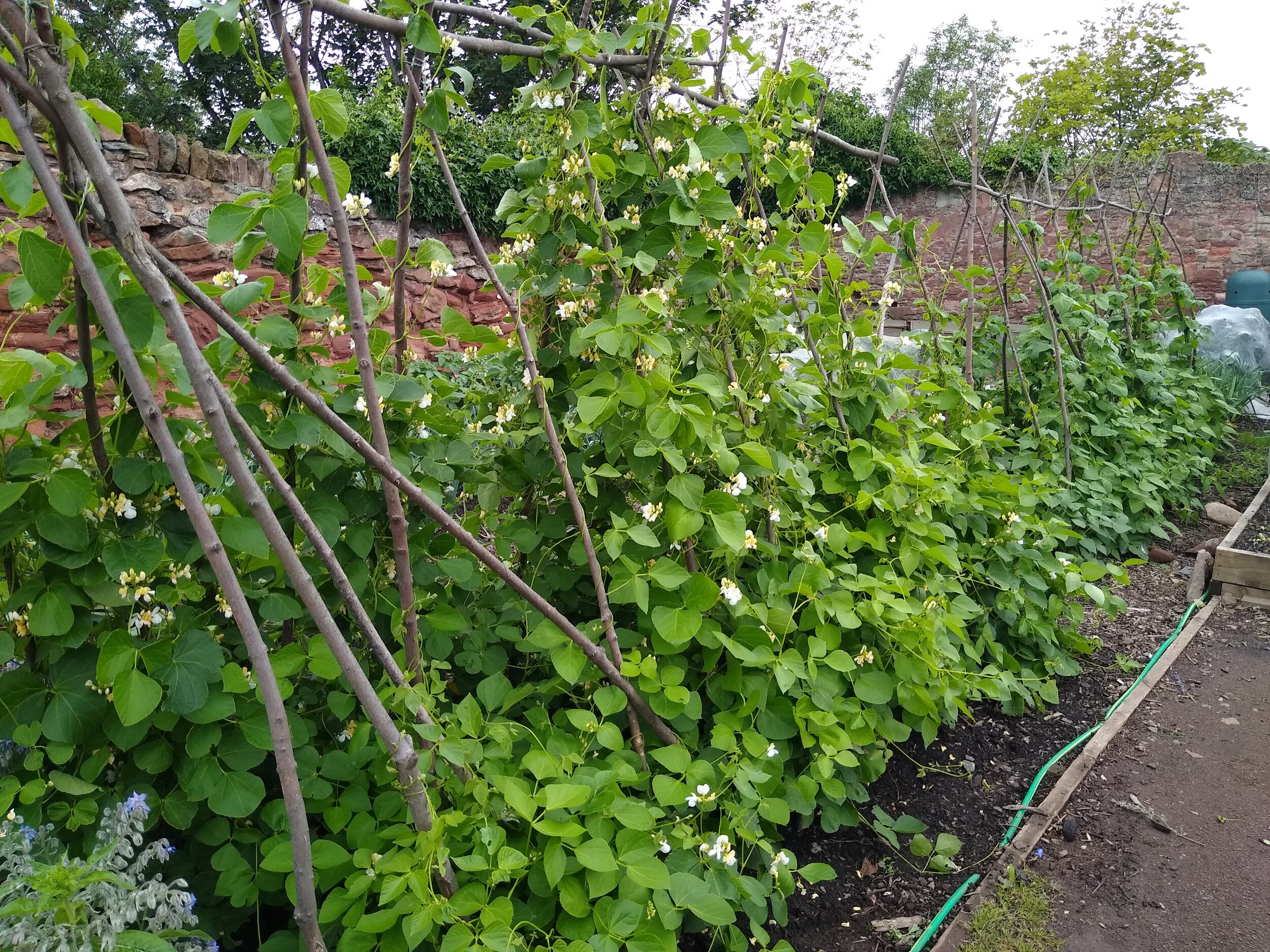Recipe: Green Bean and Silk Handkerchief Pasta
How marvellous is the name ‘silk handkerchief’ for this style of pasta? In Italian fazzoletti di seta, these are thin, silky squares of fresh pasta, gently folded to look just like fancy hankies. Use fresh lasagne sheets, or make your own to turn a simple recipe into something special. They would work beautifully to showcase some home-made pesto too, maybe this wild garlic & cabbage version of ours from earlier this year?
The beans here can be French / green, runner or purple wax. If you’re using runner beans, be sure to de-string them first: run a peeler down the ‘seams’ of the bean to remove the fibrous strings.
We get our seasonal beans from The Backlands, a community garden off Dunbar High Street run by The Ridge, whose runner beans are pictured here.
Serves 4
Ingredients
400g fresh lasagne, cut into large squares (about 10cm square), or make your own:
For fresh pasta:
400g ‘00’ flour
4 eggs
For the sauce:
1 onion, finely sliced
2 cloves garlic, crushed
1 tablespoon tarragon, roughly chopped
300g green beans, topped and tailed
100g salami / chorizo / pancetta (optional)
4 tablespoons Parmesan, grated or shaved
2 tablespoons extra virgin olive oil
A small knob of butter
Salt & freshly cracked black pepper
Juice of ½ lemon
Method
To make fresh pasta:
1. In a bowl, or straight onto the work surface, make a well in the flour and crack in the eggs. With one hand, gradually mix the eggs together, drawing flour in from the sides. Mix until all the flour in incorporated – if it’s too stiff, wet your hands and keep mixing.
Alternatively you can do this in a food processor: add the flour, crack in the eggs, pulse until well combined and looking like fine breadcrumbs. Tip out and form into a dough.
2. Knead the dough for 10 – 15 minutes until it becomes smooth and elastic.
3. Wrap in a damp, clean tea-towel and leave to rest for 30 minutes.
4. If using a pasta machine: split the dough into four pieces. Run these through the widest setting, fold over and run through again, fold and repeat. Then gradually move down through the settings until it’s gone through the thinnest.
5. If using a rolling pin, divide the pasta into four and roll each out as thin as you can get it.
6. Cut the pasta into big squares. Don’t lay them on top of each other, they’ll stick together. Lay them out on cake racks or on dry tea towels.
For the sauce:
1. If using salami / pancetta fry it off in a small saucepan or frying pan until crisp. Remove to a plate lined with paper towel. Wipe the pan round, add a dot of butter and gently sauté the onions until really soft and golden. Add the garlic and lots of black pepper and cook for another minute, then add back in the pancetta and stir through most of the tarragon – hold a little back for serving.
2. Fill a large saucepan with water, add a teaspoon of salt and bring to a rolling boil. Add the beans and pasta and cook for 3 – 4 minutes until the beans are al dente and the pasta just cooked through.
3. Drain the pasta and beans, making sure to catch a cup of the cooking water. Add them back to the big saucepan and gently stir through the sauce, along with a slug of olive oil and the lemon juice and loosen with enough cooking water to coat the pasta with the sauce – a couple of tablespoons.
4. Serve, folding over a few of the pasta squares to look pretty, with the remaining tarragon and the Parmesan scattered over, and maybe a little more olive oil and black pepper.

